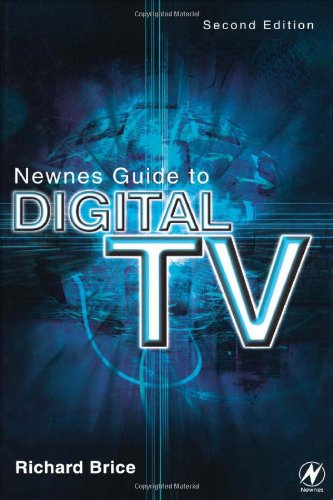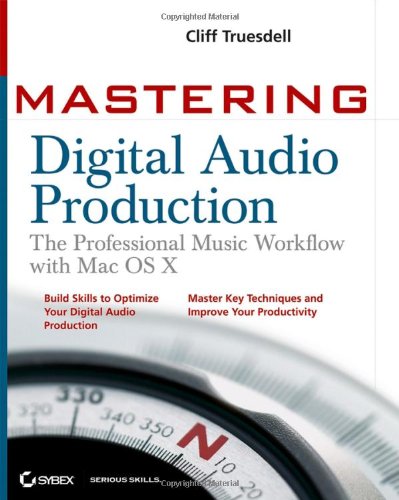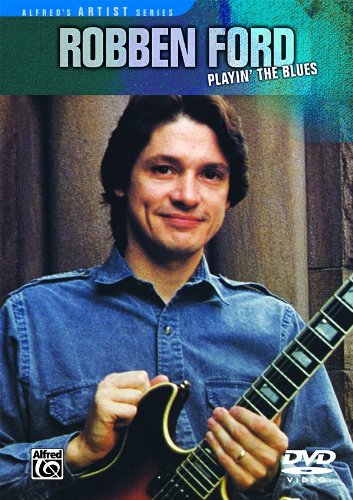Richard Brice9780750657211, 0-7506-5721-9
Table of contents :
Preface to the second edition……Page 16
Preface to the first edition……Page 18
Why digital?……Page 20
Wide- screen pictures……Page 22
A ‘ packetized’ interface……Page 0
Associated services……Page 23
Receiver technology……Page 25
The future . . …….Page 26
A brief history of television……Page 27
The physics of light……Page 28
Physiology of the eye……Page 29
Psychology of vision ^ colour perception……Page 31
Metamerism ^ the great colour swindle……Page 32
The physics of sound……Page 33
Transients……Page 35
Physiology of the ear……Page 36
Psychology of hearing……Page 37
Masking……Page 38
Temporalmasking……Page 39
Film and television……Page 40
Television……Page 41
H sync and V sync……Page 43
Colour television……Page 45
NTSC and PAL colour systems……Page 46
SECAMcolour system……Page 50
Shadowmask tube……Page 51
Vestigial sideband modulation……Page 52
Audio for television……Page 53
Recording television signals……Page 54
Colour under……Page 55
Longitudinal timecode……Page 57
TeletextTM……Page 59
Analogue high definition television ( HDTV)……Page 60
PALplus……Page 62
Data structure……Page 63
Display formats……Page 65
Digital fundamentals……Page 69
Theory……Page 70
Themechanismof sampling……Page 72
Quantization……Page 73
Digital-to-analogue conversion……Page 74
Dither……Page 75
Digital video interfaces……Page 76
Video timing reference signals (TRS)……Page 78
Filter templates……Page 80
Parallel digital interface……Page 81
Serial digital interface……Page 82
HDTV serial interface……Page 84
AES/EBU or IEC958 type 1 interface……Page 85
SPDIF or IEC958 type 2 interface……Page 86
Data……Page 87
TOSlink optical interface……Page 89
Unbalanced (75 ohm) AES interface……Page 90
Serial multi- channel audio digital interface ( MADI)……Page 91
Data format……Page 92
Scrambling and synchronization……Page 95
Embedded audio in video interface……Page 96
Error detection and handling……Page 99
EDH codeword generation……Page 100
EDH flags……Page 102
4 Digital signal processing……Page 104
Digital filtering……Page 105
Point operations……Page 107
Window operations……Page 108
Fourier transform……Page 112
Phase……Page 114
Windowing……Page 115
2- D Fourier transforms……Page 117
More about digital filtering and signal processing……Page 118
Impulse response……Page 119
FIR and IIR filters……Page 120
Design of digital filters……Page 121
Frequency response……Page 122
Derivation of band-pass and high-pass filters……Page 124
Designing an IIR filter……Page 125
IIR filter design example……Page 126
High-pass filter example……Page 128
Problems with digital signal processing……Page 129
Entropy, redundancy and artefacts……Page 131
Lossless compression……Page 132
De-correlation……Page 133
Lossless DPCM and lossy DPCM……Page 135
Frame differences and motion compensation……Page 136
Transform coding……Page 138
A practicalmix……Page 142
JPEG……Page 144
MPEG……Page 146
Levels and profiles……Page 147
Frames or fields……Page 148
MPEG coding……Page 150
MPEG coding hardware……Page 154
Statisticalmultiplexing……Page 155
DV, DVCAM and DVCPRO……Page 156
Compression based on logarithmic representation……Page 158
Psychoacoustic masking systems……Page 159
MPEG layer I compression (PASC)……Page 160
MPEG layer II audio coding (MUSICAM)……Page 161
Dolby AC- 3……Page 162
Digital line- up levels and metering……Page 164
The VUmeter……Page 165
The PPMmeter……Page 166
Opto-electronic level indication……Page 167
Digital line-up……Page 168
Switching and combining audio signals……Page 169
Soundmixer architecture……Page 170
Mixer automation……Page 171
Digital two-track recording……Page 172
Digitalmulti-tracks……Page 173
Digital audio workstations……Page 174
WAV files……Page 175
MPEG……Page 176
Dolby Surround……Page 177
Dynamic range compression……Page 180
IEC 61937 interface……Page 181
EditingMPEG layer II audio……Page 182
Swi4tching and combining video signals……Page 183
What is a video transition?……Page 185
The dissolve……Page 186
Wipes……Page 188
Keys……Page 189
Posterize……Page 190
Chroma-key……Page 191
Off- line editing……Page 193
Computer video standards……Page 194
Graphic file formats……Page 197
GIF……Page 198
Computer generated images (CGI) and animation……Page 199
Types of animation……Page 200
Paint-system functions……Page 201
Compositing……Page 207
Morphing and warping……Page 208
Rotorscoping……Page 209
3D graphics and animation……Page 210
Matrices……Page 211
Imaging……Page 213
Light……Page 214
Ray tracing……Page 216
Hard disk technology……Page 217
Other disk technologies……Page 218
IDE drives……Page 219
Firewire……Page 220
RAID……Page 221
RAID 3 (bit striping with parity)……Page 222
Media server……Page 223
The master control room……Page 224
Automation……Page 225
Editing and switching of MPEG-II bitstreams……Page 227
The ATLANTIC Project……Page 228
9 The MPEG multiplex……Page 229
The PES packet format……Page 230
Programassociation tables and programmap tables……Page 232
Synchronization and timing signals……Page 233
Presentation timestamps……Page 234
DVB service information……Page 235
SimulCrypt andMultiCrypt……Page 236
Randomization (scrambling)……Page 237
Reed-Solomon encoding……Page 238
Convolutional interleaving……Page 239
Synchronous parallel interface……Page 240
Synchronous serial interface……Page 241
The asynchronous serial interface……Page 242
Quadrature amplitude modulation……Page 244
Modulation for satellite and cable systems……Page 248
Convolutional or Viterbi coding……Page 249
Terrestrial transmission ^ DVB-T (COFDM) and US ATSC ( 8- VSB) systems……Page 250
Coded orthogonal frequency divisionmultiplexing (COFDM)……Page 251
Adding a guard period to OFDMmodulation……Page 252
The advantages of COFDM……Page 253
8-VSBmodulation……Page 254
Hierarchical modulation……Page 256
Interoperability with ATM……Page 257
ATMcell and transport packet structures……Page 258
Receiver technology……Page 259
Current set-top box design……Page 261
Circuit descriptions……Page 262
Digital tuner……Page 272
COFDMfront-end for DTV-T……Page 276
D- VHS……Page 277
Track structure……Page 278
Data rates and picture formats……Page 279
Audio……Page 280
Regional codes……Page 281
The DVD player……Page 282
Copy generationmanagement system (CGMS)……Page 283
Content scrambling system……Page 284
DVD Recordable ( DVD- R)……Page 285
Golden rules……Page 286
DVD faults……Page 287
PSU faults……Page 288
Leaning forward and leaning back……Page 289
HTML documents……Page 290
Anchor tags……Page 291
MPEG-IV ^ object-oriented television coding……Page 292
Objects and scenes……Page 293
Virtual realitymodelling language (VRML)……Page 294
Practical VRML files……Page 301
MPEG- IV audio……Page 303
Structured audio orchestra language……Page 304
Text-to-speech systems……Page 305
Audio scenes……Page 307
MPEG- VII and metadata……Page 308
Index……Page 310







Reviews
There are no reviews yet.